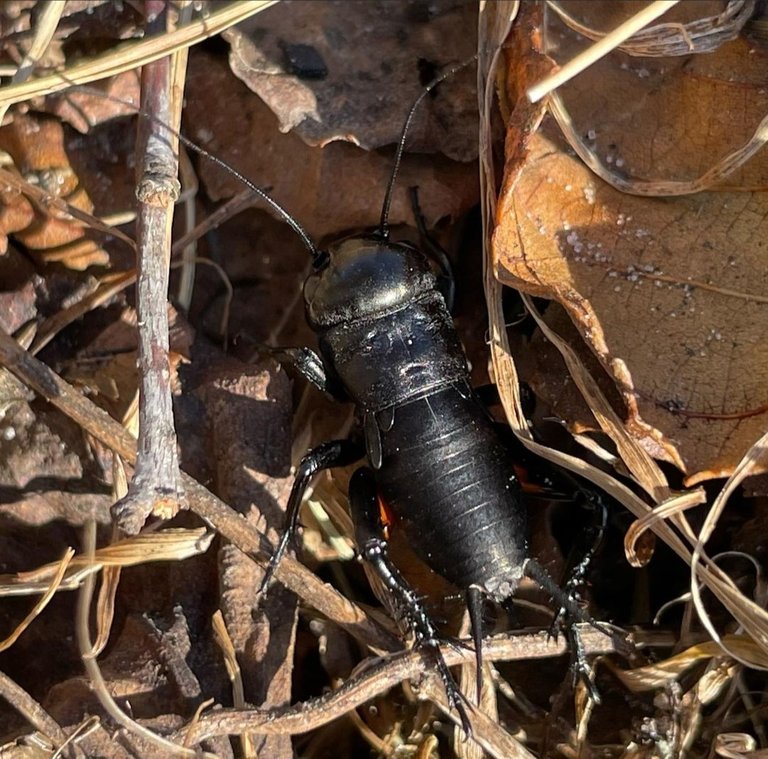

Field cricket
This is truly one of the main findings of this season. You won't believe it, but I saw a cricket for the first time in my life. I didn't even immediately understand who it was, because before that I had only heard about crickets and for me it was something very abstract, well, like crickets and crickets, and I didn't even imagine what it looked like. It turns out he looks exactly like that Who until now also did not imagine what crickets look like.
It belongs to the family of real crickets, which has more than 2,300 species.
The body length of males is 1.9-2.3 cm, and females 1.7-2.2 cm. The oviposition of females can reach a length of up to 1.2 cm.
Omnivorous, but prefers plant foods. Larvae and adults feed on the leaves and roots of various herbaceous plants. They also eat small terrestrial animals and their corpses. They prefer to live in warm, sunny meadows and fields, light pine forest (by the way, on the edge of the pine forest, I met him). Crickets dig holes in the ground 10-20 cm deep and 2 cm in diameter. Crickets also have well-developed acoustic communication. Only mature males can signal to attract and care for the female, as well as to scare away other males. The life expectancy of an adult is 2-3 months, and taking into account the larval stages up to 15 months.

Marmalade fly (Episyrphus balteatus)
It belongs to the murmur family, which numbers more than 6 thousand. species. Body length up to 1.2 cm, wing length 6-10 mm, proboscis - 2 mm. Meadows and heather wastelands are usually inhabited. Summer from the second half of summer to autumn. Usually fly within 2 meters from the ground, are active in both cloudy and sunny weather. Larvae are predators and prey on aphids. Adults feed on pollen, rarely nectar. Prefer flowers of plants of the aster family, ivan-tea, foxglove, sorrel, tavolga, blackberry, bluebell, heather, etc.